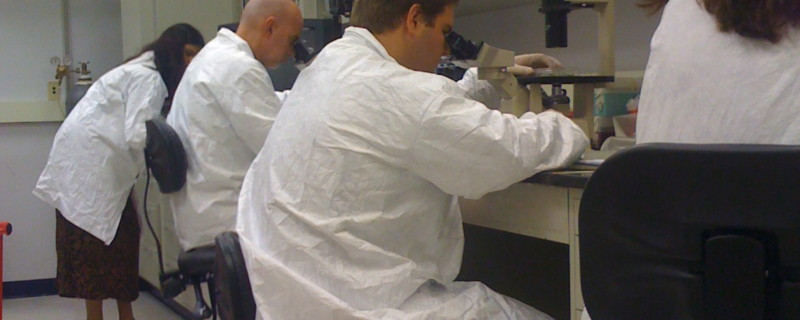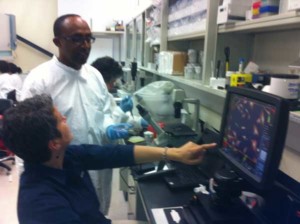
Cell Culture, More Science Than Art – A Call For Care in Cell Culture Practices
A Guest Blog by Timothy Fawcett, Ph.D., Director, BioTechnical Institute of Maryland
A few weeks ago the “Ask the Expert” topic was, Cell Line Authentication-A discussion on protecting research against cell line contamination. Erin M. Hall of Genetica DNA Laboratories answered questions with good responses. I have spent a lot of time thinking about the problems raised, as well as answers to those problems and I keep coming back to cell culture education as a large part of the answer.
Cell Culture – Art or Science?
In the formative years of cell culture, many referred to it as more art than science. Most likely, a response to the finicky nature of cells, inconsistent results and a lack of understanding about the science behind cell culture. As technological advancements occurred in cell culture, things like prepared media, biological safety cabinets, and disposable plasticware, scientists had time to think about other things beyond the best cell culture practices. In addition, the trend up until recently was mostly to use robust and easy to use cells like the HeLa line, which due to its robustness, eliminated the need for deep study and careful training on the delicate nature of animal cell growth.
As a result, for the most part hands-on training in cell culture does not exist. If training does occur, it is usually by the ancient oral tradition of lab-lore which leads to the “how” but not the “why”. This lack of specific training in both how and why allows for the perpetuation of incorrect information and makes troubleshooting impossible.
The Cell Culture as a “Tool in the Toolbox” Approach

When cell health isn’t a priority, other lab practices suffer. One example I see all the time is taking the cells out of the incubator and leaving them out for long periods of time, maybe even on the microscope stage, while reagents or transfection mixtures are made. The problem with this is that as you leave your culture out in the atmosphere, the culture media “sees” less CO2 than there was in the incubator, therefore when using a sodium bicarbonate buffered system the media becomes a bit more alkaline. Thinking that these “little things” are not a problem is a mistake because you cannot see it, but the cells change. The cell membrane physically changes and behaves more like rubber than a cell membrane. I know this because I used to do microinjection experiments. With this slight change in pH the cell membrane became impossible to pierce with a microinjection needle or the cell membrane stuck to the needle and clogged it making injection impossible. Maintaining the correct pH corrected this problem and made microinjection possible. The point is if you’re trying to get something across a membrane or if you’re doing receptor studies keeping your cells out of the incubator may be hurting your results or at the very least affecting reproducibility. This is something you cannot see but is it happening, cells respond to everything you do to them. With careful cell culture practices, you can control and prevent some of these deleterious changes. However, if proper cell culture techniques and cell health isn’t a priority or in many cases, isn’t well understood then there is no chance of understanding the negative impact these practices have on culture, viability, reproducibility, expression and overall quality of your cell culture process.
Cell Line Misidentification and Contamination is a Serious Issue
Two questions in particular that were asked in the “Ask the Expert” segment were interesting to me. The first, “How does cell line misidentification and cross contamination happen in the lab”. As Erin points out mistakes happen, aerosols allow cells to float around in the air, mislabeling, sharing media, having the person down the hall be your cell provider can all be contributors.
Many don’t see misidentification as a problem, but it is so prevalent that it was the focus of a recent Wall Street Journal on-line article by Amy Dockser Marcus (April 20, 2012) entitled “Lab mistakes hobble cancer studies but scientists slow to take remedies”. Since the early to mid-1970s an article comes out in a major scientific journal every 5-10 years, further confirming this repeating story. One of the most significant examples of this kind of contamination is presented in the a wonderful book, The Immortal Life of Henrietta Lacks by Rebecca Skloot, which chronicles the discovery and subsequent spreading of HeLa cells to research labs throughout the world and the cross-contamination issues that resulted.
So the question is – Is anyone out there listening? As Erin pointed out Journals are finally thinking about this problem and taking aim to stop it. The interesting thing is that this particular problem, as an example, is obviously not a secret, yet many scientists put this problem on the back burner and don’t devote much thought to this problem unless it directly affects them. With the recent finding that the genome of the HeLa cell line is completely abnormal with chromosome shattering and recombination, genes with multiple copies and abnormal gene expression pathways it is a wonder anyone uses HeLa cells anymore (1).
Steps Toward a Solution
The second interesting question was “Are there any regulatory requirements to perform cell line authentication?” Erin’s answer to this question started with “there are no specific regulations for cell line testing”, in fact there are not really any standards in animal cell culture at all. I would argue that standardization and training are critical to obtaining reproducible and authentic results. The confirmation of the cell type you are using is a great first step and should be obligatory, along with where the cells were purchased or obtained, and the passage number used during an experiment. As Erin mentioned some leading journals are planning on requiring some of this information. Hopefully others will follow suit. When we grow cells in culture, the conditions used and media components present cause a selection of the cells that perform best under those specific conditions. This is why there is a genetic drifting during culturing and why we only grow cells for a limited number of passages. Being mindful of these cell line changes help us to provide the most accurate results possible for our own knowledge and also for publication purposes.
My proposition that there should be standards for cell culture practices is not novel. In 2005 the European Centre for the Validation of Alternative Methods released Guidance on Good Cell Culture Practice (2). Guidance is based on six operational principles, briefly they are. 1. Establishment of sufficient understanding of the in vitro system and factors that can affect it. 2. Assurance of quality of materials used. 3. Documentation of information necessary to permit replication. 4. Establishment of adequate measures to protect individuals and the environment. 5. Compliance with relevant laws and regulations and ethical principles. 6. Provision of relevant and adequate education and training for all personnel to provide high quality work and safety.
Advancing Cell Culture Science
In my opinion, the cell culture community as a whole should be prepared to move cell culture forward and solidify its practice as science rather than art. I believe there are some practical ways this can be accomplished. For example, culturists should use the microscope frequently; make sure there is an understanding of the buffering systems used in culture and the general composition of traditional media. It is also important to understand the limitations and attributes of serum; the impact of media depletion or over-confluency to name a few common problematic areas. I also believe setting standards and procedures where possible and recommending that, optimally, cells be grown without antibiotics and lastly, knowing the lineage of cells you are using. Implementing these simple things will help keep your research safe, make your work more productive and results easier to publish.
About the Author:
Timothy Fawcett, Ph.D. has been in the biotechnology business for over 30 years. Trained as a biochemist he has held senior positions in both academics and industry and has been a mentor to many young scientists throughout his career.
For the last 12 years Dr. Fawcett has been the Director of the BioTechnical Institute of Maryland (BTI) a non-profit institute located in Baltimore, Maryland. He is also the Founder and Director of BioSciConcepts, a social venture of BTI that provides hands-on training for professional scientists in cell culture, baculovirus based expression, as well as topics such as molecular biology, PCR and real-time PCR. BioSciConcepts is an internationally recognized provider of expertise in the biological sciences and has provided consultation services to several small and large biotechnology companies.
Footnotes
-
1. Mittelman, D, and Wilson, J.H., Genome Biology 14: 111, 2013
-
2. Coeche, et al, Alternatives to Laboratory Animals 33: 261, 2005